Abstract
OBJECTIVE: This study analyzed the association between demographic and medical system factors and the pediatric trauma death rate in North Carolina. SUMMARY BACKGROUND DATA: Trauma is the leading cause of death in children. Various medical system factors have been suggested to reduce pediatric morbidity and mortality rates, but the association with these rates has not been tested. METHODS: Data were obtained from the North Carolina medical examiner's database. The dependent variable was the county per capita pediatric trauma death rate. Twenty-one demographic and medical system measures were selected as independent variables. RESULTS: Nine hundred forty-one pediatric trauma deaths from 1986 to 1989 were included in our sample. Multivariate analysis identified the variables most highly associated with the dependent variables. The presence of advanced life support (ALS) training was the only medical system factor associated significantly with pediatric trauma death rates. Trauma centers, emergency (911) telephone access, and other medical resource variables had no significant association. CONCLUSIONS: The study confirms other reports showing that demographic factors have an important predictive association with the trauma death rate in children. Advanced life support was the only medical system resource associated significantly with pediatric trauma death rates. This study underlines the significance of pre-hospital care in the treatment of pediatric trauma.
Full text
PDF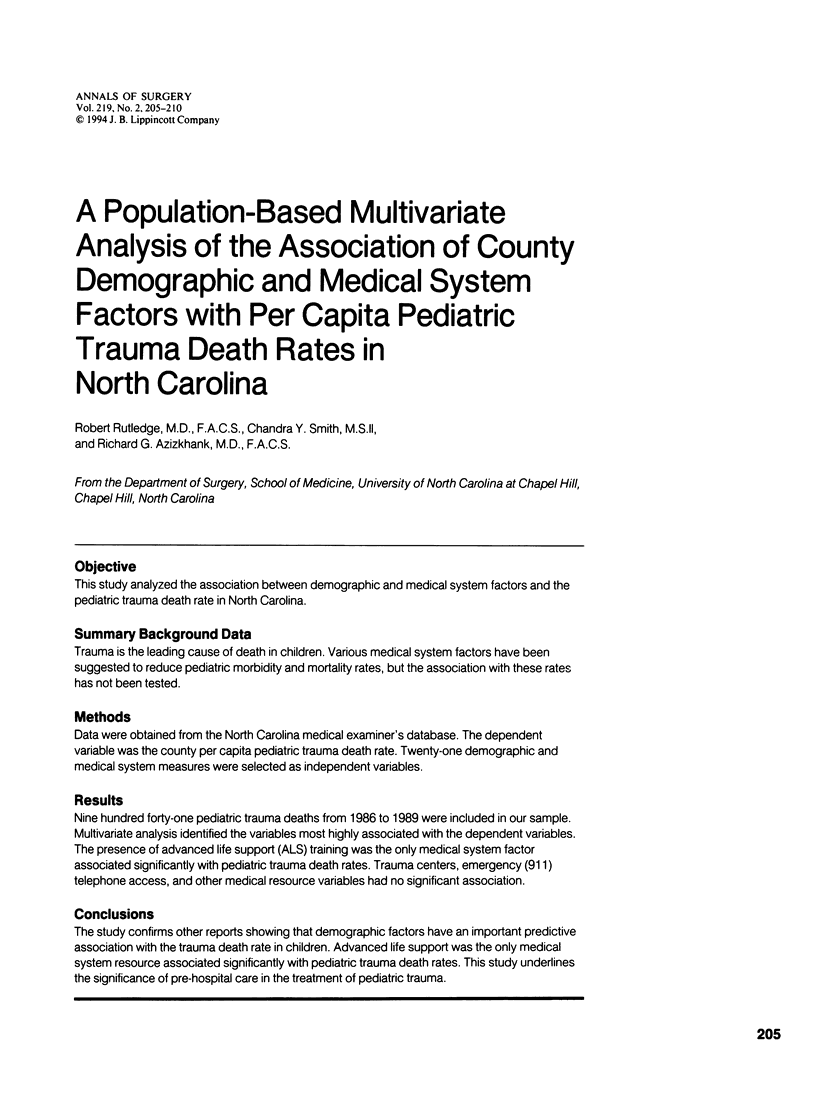
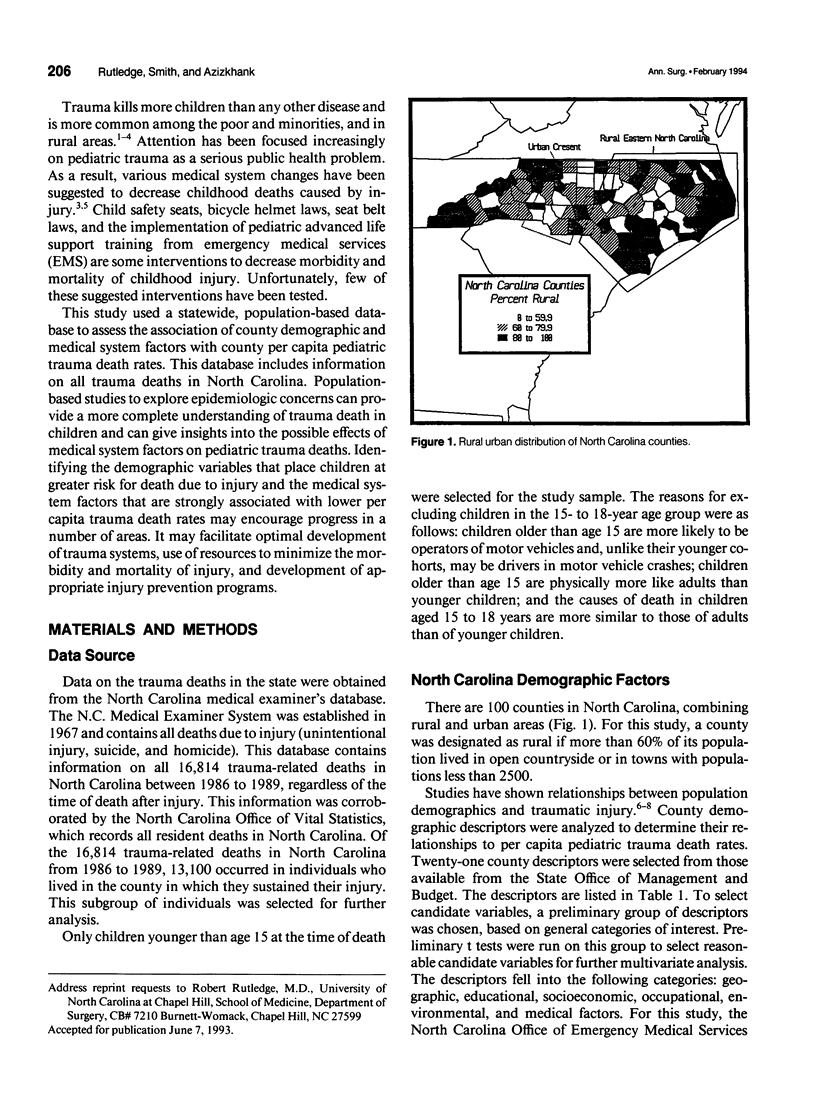
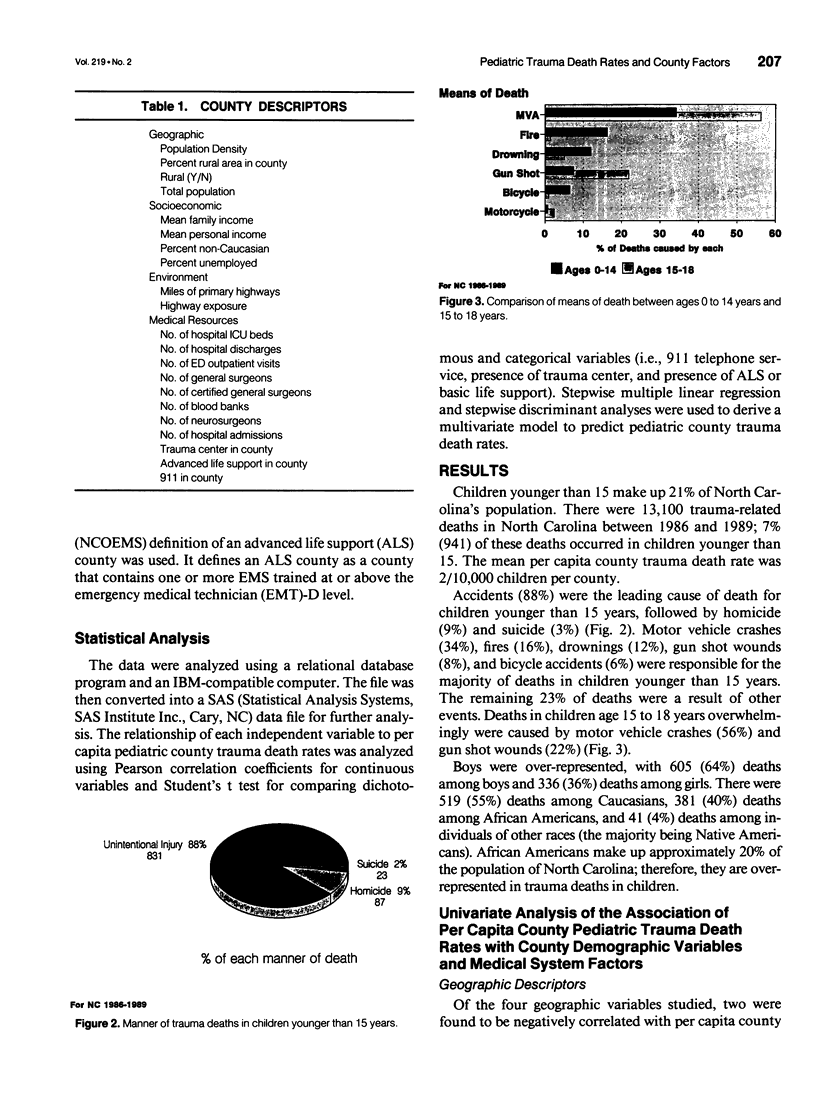
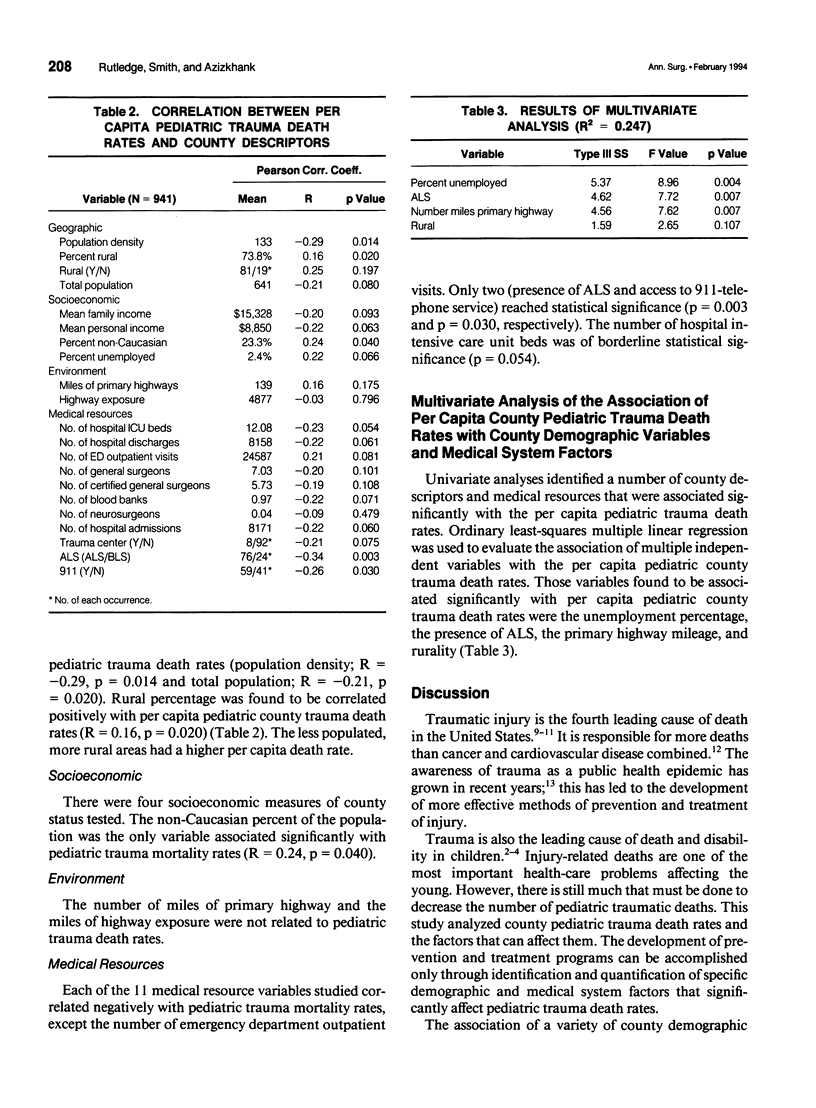
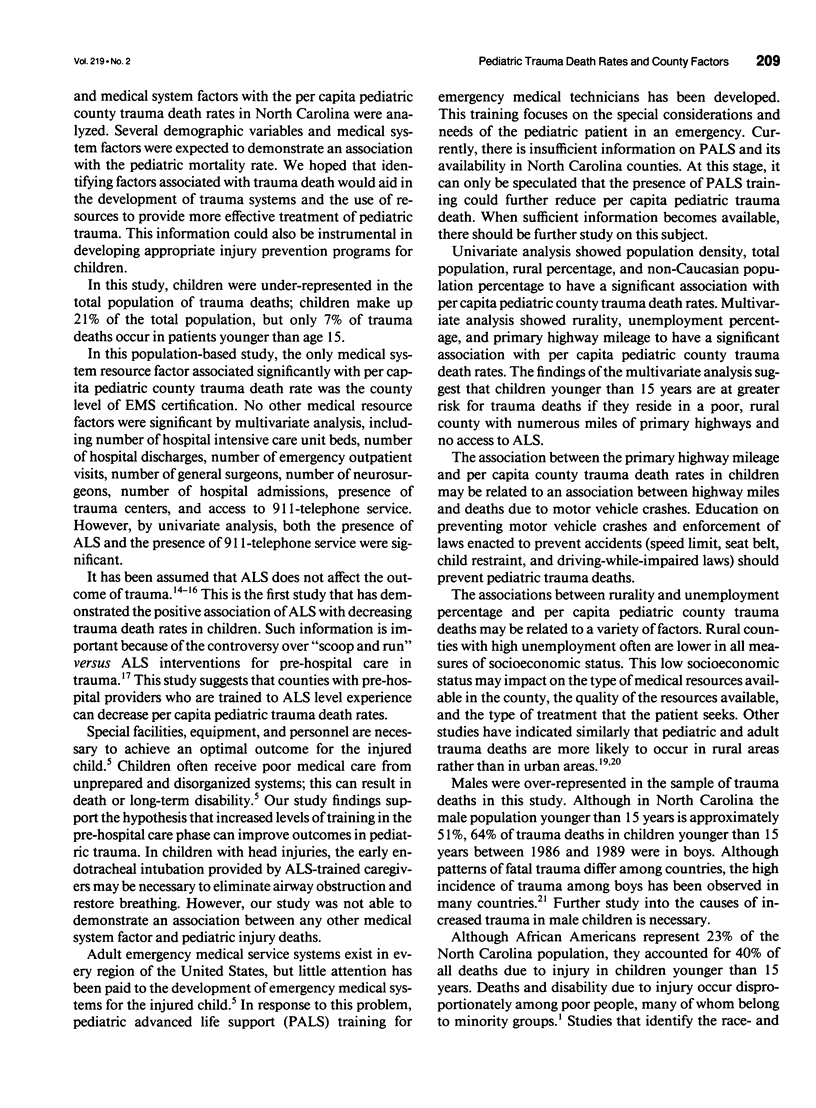
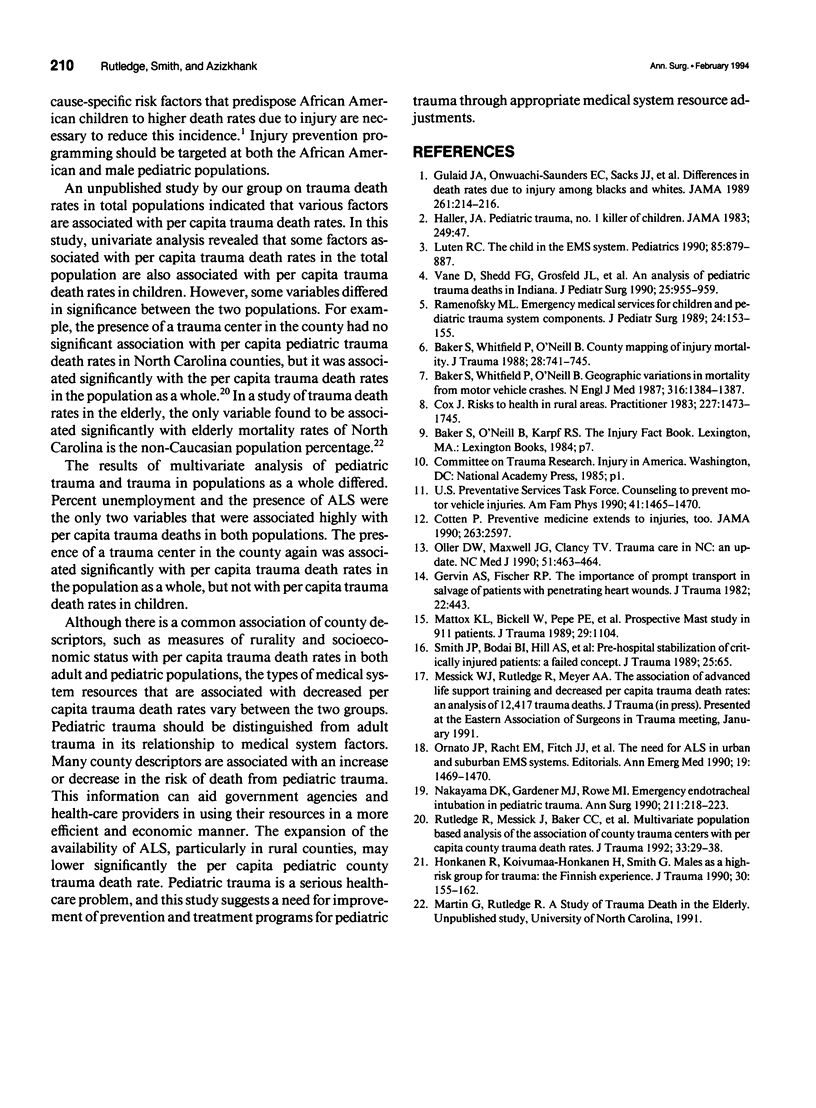
Selected References
These references are in PubMed. This may not be the complete list of references from this article.
- American Medical Association Commission on Emergency Medical Services: Pediatric emergencies. An excerpt from "Guidelines for the Categorization of Hospital Emergency Capabilities". Pediatrics. 1990 May;85(5):879–887. [PubMed] [Google Scholar]
- Baker S. P., Whitfield R. A., O'Neill B. County mapping of injury mortality. J Trauma. 1988 Jun;28(6):741–745. doi: 10.1097/00005373-198806000-00003. [DOI] [PubMed] [Google Scholar]
- Baker S. P., Whitfield R. A., O'Neill B. Geographic variations in mortality from motor vehicle crashes. N Engl J Med. 1987 May 28;316(22):1384–1387. doi: 10.1056/NEJM198705283162206. [DOI] [PubMed] [Google Scholar]
- Cox J. Risks to health in rural areas. Practitioner. 1983 Sep;227(1383):1473–1477. [PubMed] [Google Scholar]
- Gervin A. S., Fischer R. P. The importance of prompt transport of salvage of patients with penetrating heart wounds. J Trauma. 1982 Jun;22(6):443–448. doi: 10.1097/00005373-198206000-00001. [DOI] [PubMed] [Google Scholar]
- Haller J. A., Jr Pediatric trauma. The No. 1 killer of children. JAMA. 1983 Jan 7;249(1):47–47. doi: 10.1001/jama.249.1.47. [DOI] [PubMed] [Google Scholar]
- Honkanen R., Koivumaa-Honkanen H., Smith G. Males as a high-risk group for trauma: the Finnish experience. J Trauma. 1990 Feb;30(2):155–162. doi: 10.1097/00005373-199002000-00004. [DOI] [PubMed] [Google Scholar]
- Mattox K. L., Bickell W., Pepe P. E., Burch J., Feliciano D. Prospective MAST study in 911 patients. J Trauma. 1989 Aug;29(8):1104–1112. doi: 10.1097/00005373-198908000-00007. [DOI] [PubMed] [Google Scholar]
- Nakayama D. K., Gardner M. J., Rowe M. I. Emergency endotracheal intubation in pediatric trauma. Ann Surg. 1990 Feb;211(2):218–223. doi: 10.1097/00000658-199002000-00015. [DOI] [PMC free article] [PubMed] [Google Scholar]
- Oller D. W., Maxwell J. G., Clancy T. V. Trauma care in North Carolina: an update. N C Med J. 1990 Sep;51(9):463–464. [PubMed] [Google Scholar]
- Ornato J. P., Racht E. M., Fitch J. J., Berry J. F. The need for ALS in urban and suburban EMS systems. Ann Emerg Med. 1990 Dec;19(12):1469–1470. doi: 10.1016/s0196-0644(05)82623-x. [DOI] [PubMed] [Google Scholar]
- Ramenofsky M. L. Emergency medical services for children and pediatric trauma system components. J Pediatr Surg. 1989 Feb;24(2):153–155. doi: 10.1016/s0022-3468(89)80236-2. [DOI] [PubMed] [Google Scholar]
- Rutledge R., Messick J., Baker C. C., Rhyne S., Butts J., Meyer A., Ricketts T. Multivariate population-based analysis of the association of county trauma centers with per capita county trauma death rates. J Trauma. 1992 Jul;33(1):29–38. doi: 10.1097/00005373-199207000-00007. [DOI] [PubMed] [Google Scholar]
- Vane D., Shedd F. G., Grosfeld J. L., Franiak R. J., Ulrich J. C., West K. W., Rescorla F. J. An analysis of pediatric trauma deaths in Indiana. J Pediatr Surg. 1990 Sep;25(9):955–960. doi: 10.1016/0022-3468(90)90237-4. [DOI] [PubMed] [Google Scholar]


